First ride at the Varese factory press launch on the heavily revamped 2018 version of the MV Agusta Brutale 800RR naked triple
MV Agusta has been out of the limelight for the past couple of years, while its owner Giovanni Castiglioni attended to resolving the fallout from his failed attempt to push for growth via increased sales of entry-level bikes to the MV brand, like the Brutale 675 triple, and niche models like the Rivale, Dragster, Turismo Veloce etc. This was rewarded with a jump in revenue from US$36 million to US$122 million in two years, but making that happen meant the Italian firm taking on additional debt. Somewhat inevitably, this resulted in a cashflow crisis, leading to the company filing for the Italian equivalent of the USA’s Chapter 11 bankruptcy, which permits a structural reorganization and recapitalisation in order to regain solvency.
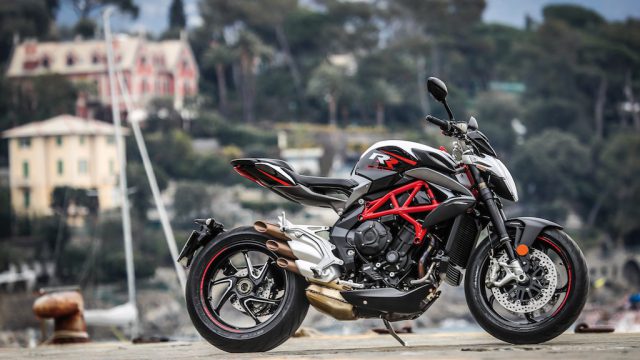
MV Agusta made 9,000 motorcycles in 2015, half that number the following year and even less in 2017, thanks to that cash shortfall that’s now been resolved via a capital injection from Black Ocean Investment Group, headed by Russian entrepreneur (and MV Agusta rider) Timur Sardarov, 35. Black Ocean has acquired 49% of the MV Agusta Holding company’s equity, with Sardarov now VP of the firm with overall supervision of its day-to-day operations, alongside Castiglioni whose primary focus is now on product and marketing. Lifting the amount of capital invested in the company to 50% more than Italian bankruptcy courts required to terminate Chapter 11 has not only kickstarted production again – albeit to a more limited average of 30 bikes a day from the lakeside Varese factory – but also enabled buying back Mercedes-AMG’s ownership stake of 25% in MV Agusta Motor. MV is now apparently financially straight and back for good, in returning to Castiglioni’s original strategy of concentrating on a reduced volume of higher-priced super premium models, but with a greater degree of exclusivity. It’s a strategy he describes as “sell less, sell better” as he focuses anew on building MV’s delectable examples of Motorcycle Art, starting with the high end RR performance version of the company’s best-selling model, the Brutale 800 triple.
Revised version of 798c three-cylinder motor produces a claimed 140bhp/103kW at 12,300 rpm, and 87Nm/64.16ft-lb of torque at 10,100 revs – same as before in spite of Euro 4 regulations requiring reduction of exhaust emissions by 56%, and noise by 51%
The heavily revised stock Brutale 800 was the first MV Agusta model to reach the marketplace in Euro 4 compliant form two years ago, before production stalled owing to the firm’s financial hiccups. But in that guise its 798cc 12-valve dohc three-cylinder motor had produced much less power compared to the previous Euro 3 version, which kicked off MV Agusta’s family of 800 triple models back in 2012 – a lemon from which MV made refreshing lemonade via a radical reworking of the engine’s character that arguably resulted in a better hands-on product. So while this entailed a 9bhp power loss from the 2015 model, with the 2016 Euro 4 bike’s claimed 116bhp at the crankshaft at 11,500 rpm, there was a corresponding increase in torque, peaking at 83Nm/61lb-ft at 7,600 rpm compared to the previous 78Nm/57.8ft-lb a thousand revs higher – and with 90% of that figure already available at just 3,800 revs, according to MV. A 300km day I spent aboard the bike two years ago revealed a broad spread of usable performance and enhanced rideability that’d be welcomed by real world riders, who on a Naked roadster like the Brutale generally spend much longer riding the torque curve in the middle of the rev range, than they do chasing the revlimiter.
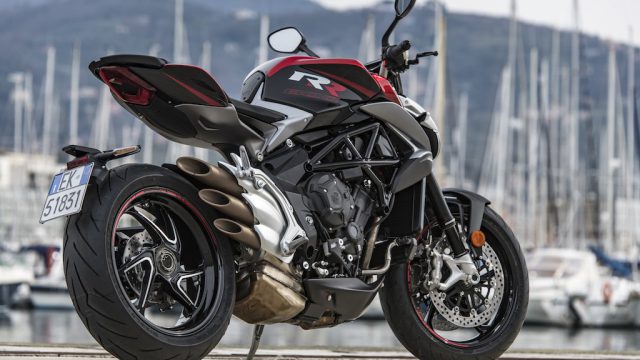
But now in the 2018 Brutale 800RR there’s the best of both worlds, thanks to ongoing work by the 26-strong R&D team in MV Agusta’s Varese factory, headed by its Director of Technical Development, American Brian Gillen. “We kept working hard during all the difficult times for the company during 2016/2017, because Giovanni is fortunately a firm believer in R&D,” says Gillen. “Even when the company was having some very difficult moments, he always gave us exactly what we needed when we needed it, to do what we wanted to do. One main principle we had when working on this RR project was that we didn’t want to lose a single horsepower making that transformation from Euro 3 to Euro 4. In achieving that we’ve also redesigned this entire bike from the ground up, while retaining the same sense of character and excitement. We've reworked the chassis, electronics package and engine to provide our riders with one amazing motorcycle."
Eldor EM2.0 ECU incorporating the Mikuni RBW/ride-by-wire throttle package has revised engine mapping via four different riding modes – Sport, Normal/Touring and Rain, plus one Custom setting, and eight levels of switchable traction control.
Well, he would say that, wouldn’t he – but that commitment to improving an already satisfying product has indeed resulted in the 800RR regaining the lost top end performance its base model companion gave away in achieving Euro 4 compliance, with its 79 x 54.3 mm three-cylinder motor with backwards-rotating 120º crank that delivers quicker steering via decreased crankshaft inertia, now delivering a claimed 140bhp/103kW at the crank at 12,300 rpm, and 87Nm/64.16ft-lb of torque on tap at 10,100 revs – essentially the same stats as the previous 800RR in Euro 3 form, in spite of the necessity for Euro 4 compliance of reducing exhaust emissions by 56%, and noise by 51%. “We have dual injectors on the RR engine, one top spray and the other under the butterfly,” says Gillen. “Plus there’s a new cylinder head with a mechanical cam adjuster rather than a hydraulic one, and with completely revised combustion chambers, we’re now burning the fuel differently inside of the engine. And alongside all-new camshafts with different cam profiles and timing, and new valve guides, we also have a harmonic damper built into the side of the cylinder head, which helped us remove quite a bit of high frequency noise coming out of the engine.”
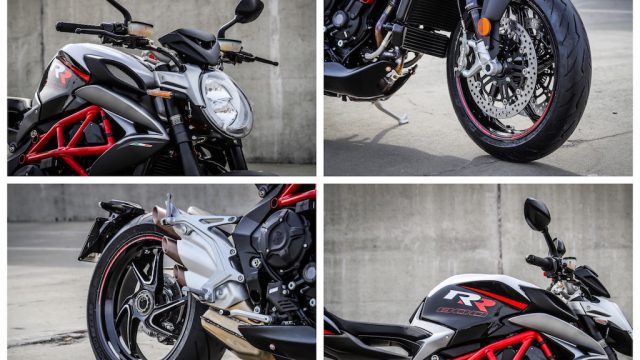
But thumb the starter button on the new 800RR, and you must still get ready to be serenaded by the triple’s trademark sonata of sound – albeit in slightly more muted but still melodic guise – emanating from the all-new, more restrictive 3-1-3 exhaust’s stacked array of slash-cut pipes, exiting the three-litre bigger silencer canister mounted beneath the engine that houses the revised three-way catalyst. “We had a very clear objective from the beginning that we didn’t want to eliminate sound from our bikes,” states Gillen. “An MV has to sound like an MV, and it has to feel like an MV, so we don’t want to eliminate vibrations completely, just the ones that are annoying.” Besides the exhaust, that was achieved via redesigned engine parts, including the balance shaft, primary gear, valve train intermediate gear and water pump drive gear, as well as a revised method of mounting the engine more solidly in the frame, via two separate mounts in the front rather than a single long bolt, so stiffening up the torsional rigidity of the entire structure, and reducing vibes.
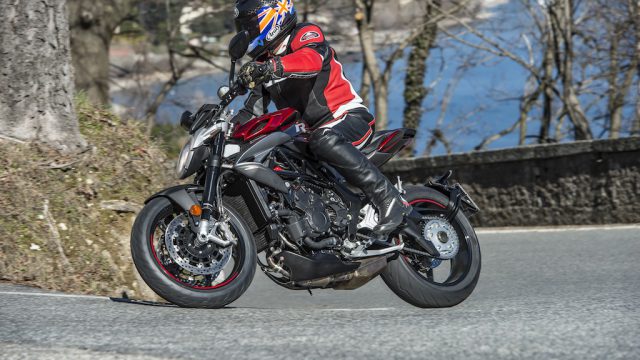
The 800RR engine’s new slipper pistons and revised combustion chambers deliver a 12.3:1 compression ratio, and with those new cam profiles and valve timing the new cylinder head breathes more deeply than before through a bigger airbox thanks to a reshaped 16.5-litre fuel tank, with revised engine mapping via the uprated Eldor EM2.0 ECU. This has brand new algorithms controlling the remapped Mikuni RBW/ride-by-wire throttle package, with a choice of four riding modes – Sport, Normal and Rain, plus one Custom setting with increased options, and eight levels of switchable traction control. The six-speed gearbox has unchanged ratios, but the ramp-style oil-bath slipper clutch now fitted is hydraulically operated, and a two-way EAS/Electronically Assisted Shift 2.0 Up-Down quickshifter is also included as standard.
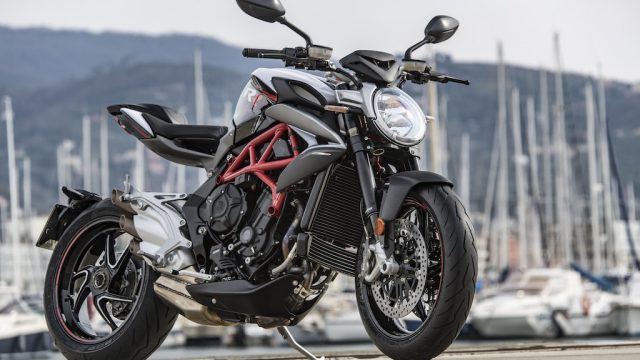
The Brutale’s revamped chassis retains MV Agusta’s trademark composite format, with a tubular steel upper spaceframe bolted to cast aluminium sideplates in which the single-sided cast alloy swingarm pivots. But its spaceframe section is now made in ALS alloy steel tubing that’s reportedly more corrosion-resistant than the more familiar 4130 chrome-moly variety, and is also relatively easy to weld, as well as more durable in a crash, says Gillen. The swingarm has been lengthened 20mm, thus extending the wheelbase to 1400mm and throwing more weight onto the front wheel for extra grip in turns, and there’s more conservative steering geometry, too, with trail now increased to 103.5mm from 95mm on the Euro 3 model, while the head angle has been kicked out a full degree to 24.5º, all in pursuit of calming down the handling to make it a little less edgy than before, per Gillen’s gospel of broadening the Brutale’s accessibility to customers.
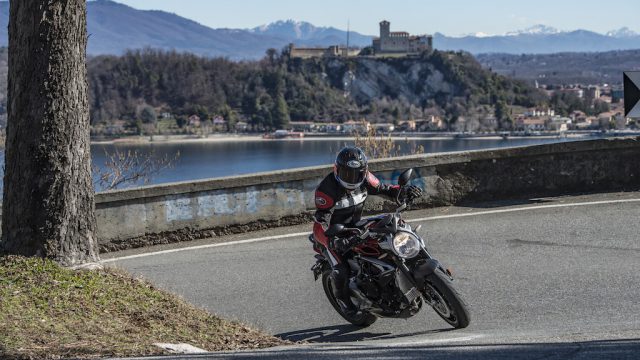
The 800RR’s fully adjustable suspension is uprated, with a new design of Sachs monoshock giving 124mm of travel at the rear via its progressive-rate link, and a new all-aluminium (both inner and outer tubes) lightweight 43mm Marzocchi upside down fork up front, with 125mm of travel. The Brembo brake package is unchanged, though, with the radially-mounted four-piston calipers gripping twin 320mm discs up front, and a single 220mm disc with twin-piston caliper at the rear. Switchable Bosch 9-Plus ABS is included as standard as required by Euro 4, complete with RLM/Rear Lift-Up Mitigation to help control stoppies. Dry weight of the 2018 Brutale 800RR is 175kg – 2kg more than the model it replaces, says Gillen, but also a weighty 9kg more than is quoted for the 35% less costly Triumph Street Triple RS, its only direct three-cylinder rival costing Euro 11,900 in Italy, against the MV Agusta’s Euro 16,070 – and the British bike has the added benefit of carrying Öhlins suspension front and rear.
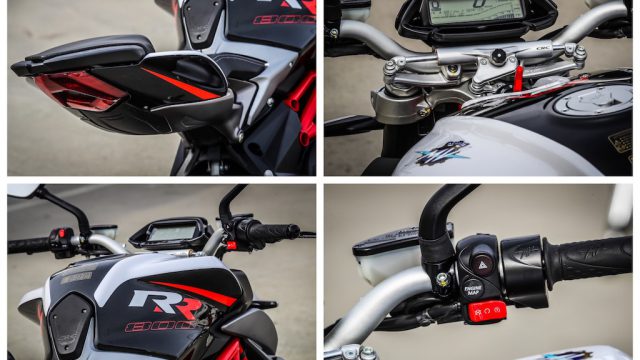
The Brutale 800RR is available in either red and white or black and red colour schemes, enhanced by good-looking diamond-machined forged aluminium wheels. The rear one of these carries a new tighter cushdrive aimed at giving increased durability over time, as well as a more direct feel from the throttle to the rear wheel. The bike’s aggressive appearance has been subtly restyled by Spanish designer Carlos Solsona, who worked alongside MV Agusta’s Senior Designer Adrian Morton when he headed up Benelli’s styling department, and has since followed him to MV. There’s an all-new LED headlamp similarly-shaped to before up front, while the rear light is also LED, incorporated in a new seat cowl mounted on a cast aluminium subframe. That stacked trio of exhausts on the right are bigger and meatier-looking than before, and there are copious detail changes to covers, brackets etc.
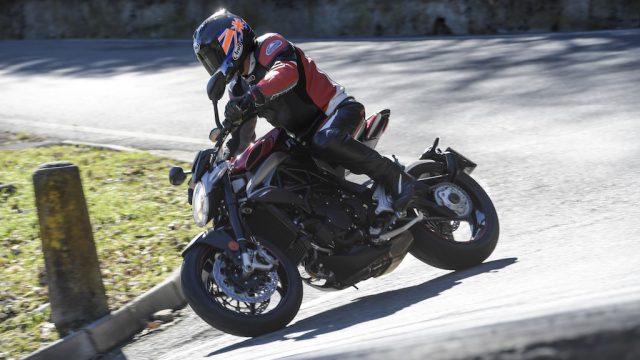
But very surprisingly the redesigned still relatively tiny dash isn’t yet a full colour TFT item such as is found on the less pricey Triumph. Instead, it’s a drab-looking, cluttered monochrome LCD item, where even with 20/20 vision you’ll need a magnifying glass to read the time, though the gear selected reading and digital speedo are easier to scan at a quick glance than before. That’s more than you can say for the array of ten warning lights lined up below the dash, though, which are still illegible in sunlight – they’re too dim, and too small. This is a mistake of potentially critical proportions, since there’s also still no fuel gauge, just a yellow warning light which is too faint to see in bright sunshine! On a bike that’s otherwise so well designed, this is so, so wrong – the dash definitely needs more real estate to be able to display everything clearly, and at that price it should be a TFT display, too. A programmable shifter light on the dash would also be nice, as well.
Engine now has wide spread of power and torque for extra rideability, a melodic, thrilling sound, and greater sense of refinement via a smoother throttle response
Those great-looking forged wheels combine to deliver 0.8kg less unsprung weight (0.3/0.5kg) to aid suspension compliance as well as reducing inertia, which definitely helps lighten the steering, as well as further enhancing acceleration. They carry Pirelli’s latest Diablo Sport Rosso III tyres whose tread pattern is claimed to give improved wet weather grip, and a dual compound rear for extra side grip in the dry. No chance to evaluate their rain performance, though, because our ride round Lago Maggiore on the press launch took place in bright spring sunshine, which also however brought out the traffic, resulting in a mostly frustrating attempt to uncork the extra performance that Gillen is rightly proud of. Still, just streetfighting our way through the cars and trucks gave an immediate introduction to the revamped engine’s muscular performance, crisp throttle response, and especially to its cleaner, crisper gearchange, allied with the very effective two-way clutchless speedshifter in a much improved transmission package. Coupled with the surprisingly light-action clutch (surprising, because of the significant power and torque on tap) which you obviously do have to use at low speeds cutting in and out of traffic, this makes the Brutale 800RR acceptably good in urban use, even if it’d be a bit of a waste commuting on it. Cool, though…
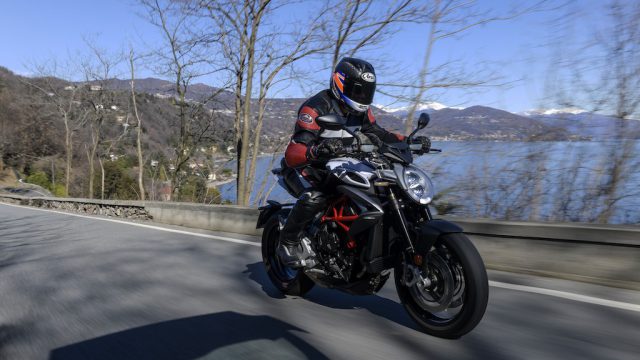
The improved low end performance comes about thanks to a smoother throttle response which still felt pretty responsive, without however being snatchy or abrupt – another surprise, given the Brutale’s sporty nature. The whole engine package feels much more refined than anything MV gave us before, and that applies to the bike as a whole – what rough edges there were have now definitely been smoothed off it, without in any way detracting from the truly impressive performance. That’ll have you smiling each time you see a clear stretch of road ahead of you and crack the throttle wide open, surfing the waves of sound as you click up wide open through the gears, and the front wheel hovers an inch above the tarmac while the Brutale fast forwards you irresistibly towards the next turn. From 8,000 rpm upwards the engine picks up revs very fast, en route to the 12,000 rpm soft digital limiter – there’s a hard cutout 300 revs higher – but those revised algorithms in the RBW throttle now make it much easier to access that 140bhp and 87Nm of torque in delivering breathtaking acceleration.
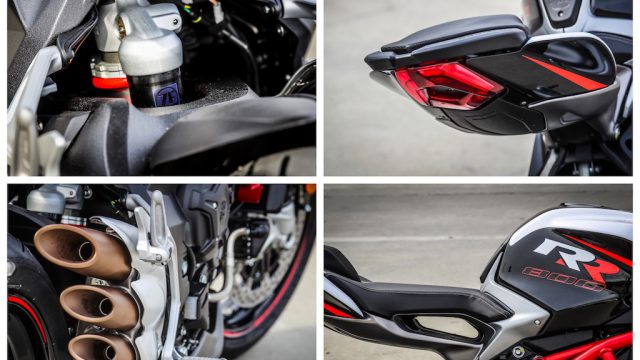
But slowing down is also enjoyable, thanks not only to the great-sounding autoblipper, which you’ll find yourself looking for every excuse to use, but also the effective Brembo brakes and well-matched front suspension settings, that don’t permit undue dive via weight transfer under braking, while still providing effective damping over ripples in the road surface left over from the last Latin summer. In fact, the MV Agusta’s twin front discs are plenty powerful for a bike of this weight, with the twin four-pot Brembo radial calipers operated by a Nissin master cylinder giving a soft initial bite followed by huge stopping power in return for very little lever effort. So you’ll be glad you have ABS when riding in the rain, although this can be switched off via a couple of buttons on the left bar to access a menu on the digital dash, which also lets you choose between traction control from levels zero (so, switched off) to eight (the most intensive). The three standard riding modes are accessible on the move via a button on the right ‘bar, with the Normal one all but perfect for most circumstances in real world riding. The Rain mode sees power restricted to 80bhp with a more gradual pickup, and I found it’s OK to use it even in the dry in congested Italian traffic. But the Normal mode is plenty controllable at low speeds, yet also delivers zestful acceleration – I found myself using it most of my day on the bike. Sport means what it says on the label – there’s a much more aggressive pickup from a closed throttle that’ll make you check on your TC setting, and choosing it sees power building in hard but linear fashion all the way to the rev-limiter, whereas in Normal mode the drive flattens out a little around 10,000 rpm to encourage you to hit a higher gear, and get back in the fat part of the torque curve. Opting for Sport also reduces engine braking, which is noticeably helpful in slowing for a turn in Normal mode, where the slipper clutch retains just enough to let you go easy on the Brembos in swinging from side to side through a twisty mountain road climbing away from the lake up into the less heavily trafficked hills.
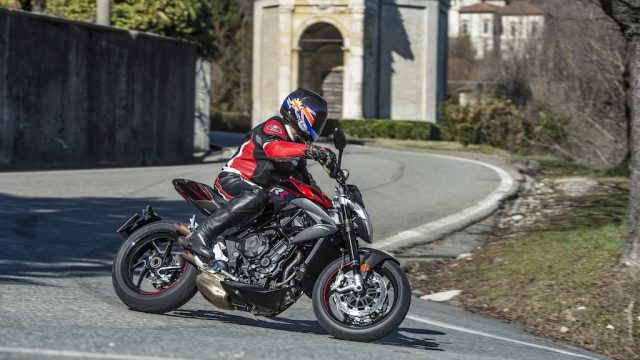
But the greater refinement overall that you can’t help but perceive in the new 800RR comes mainly from MV’s engineers finally fixing a problem their three-cylinder models have had from the very start of deliveries of the 675cc F3 back in 2012. “One of the biggest complaints we’ve had all along, and it’s been a well-founded gripe, was the jerky on/off response on the throttle,” says Brian Gillen. “We spent ages trying to fix it with countless new engine maps before finally realising it wasn’t a map problem after all, it was a logic problem that you needed new algorithms to fix. So now we’ve matched the electronics with the combustion it’s a lot more stable, especially at low RPM’s. And together with reducing all the play in the drive triangle, all the way back to the rear wheel where we have a new sprocket carrier together with the tighter cushdrive, that led us to really improve the on/off throttle response.” Indeed, this is now much more fluid than before, in transmitting that 40% more power than the engine in the standard Brutale has to the ground.
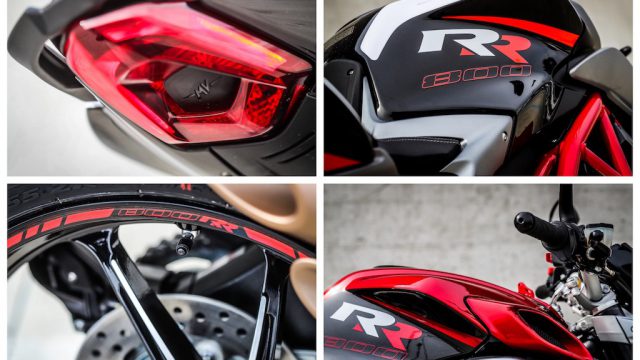
But even with the extra power up high, the Brutale 800RR isn’t only all about revs. For while the previous model was certainly more torquey than the shorter-stroke 675 Brutale which preceded it, it was still relatively revvy by middleweight Nakedbike standards. That’s history, now – there’s much more bottom end and midrange grunt, making this a more effective real world traffic tool. The riding position helps here, seemingly a little more upright than before with your feet slightly further back – but it’s fairly comfortable in spite of the hard padding on the relatively high 830mm tall seat, which has been narrowed where it meets the tank so that shorter riders can put their feet down at a stop light. Maybe not enough, though – at 5’10”/1.80m I couldn’t quite put both feet flat on the ground at rest.
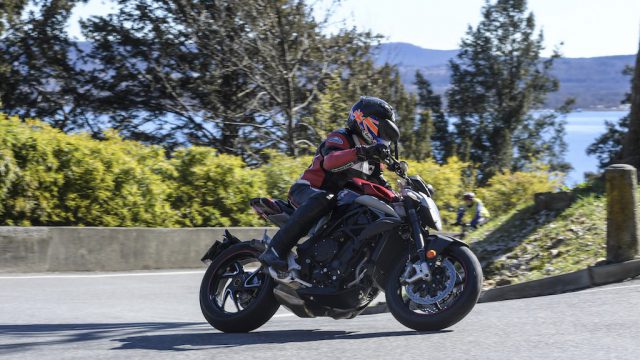
The 800RR’s Euro 4 motor offers a cleaner, more fluid drive from low down – it’ll pull wide open without transmission snatch from just over 2,500 rpm up, with an ultra-smooth torque delivery. You can hold fourth gear for miles on end along a flowing, twisty country road, just working the throttle back and forth and revelling in the MV’s flexibility, as well as that engine braking which frequently obviates using the front brake lever. And thanks to the auto-blipper that’s also now included as standard, you need never touch the clutch lever after setting off until you come to a halt on the MV, or have to start grappling with traffic queues. Of the several such systems I’ve now sampled over the years on everything from MotoGP racers to various rival streetbikes, I can’t recall one as well dialled in as the new MV’s – honestly, it’s that good, with a foolproof action so long as you’re travelling at more than 20kph. Downshifts are so smooth you’d hardly know you’d made them, if it wasn’t for that soulful blip of the throttle that the system delivers.
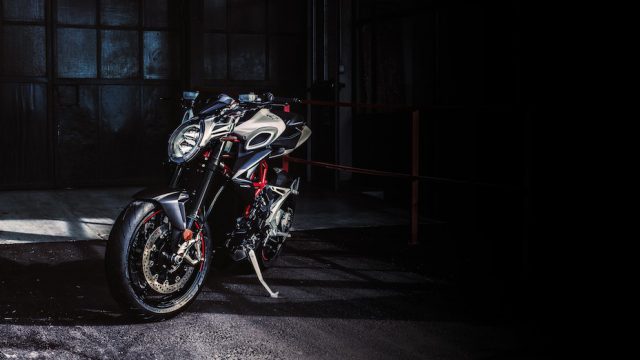
In spite of its more conservative steering geometry as well as the longer wheelbase, the Brutale 800RR remains quick-steering and agile, via the good leverage from the relatively high-set but pulled-back one-piece taper-section aluminium handlebar. But it’s just that little bit less nervous, less downright flighty as its predecessor could sometimes be, especially with the eight-position CRC steering damper now fitted that’s absent from the stock Brutale 800. So even though the front wheel lifts under hard acceleration, you don’t get the handlebars shimmying in your hands any more as you gas it wide open. Yet the Brutale 800RR somehow feels even lighter on the move thanks to the crankshaft rotating in the opposite direction to the wheels, thus minimising its gyroscopic effect and allowing quicker changes of direction with less effort required to do so. Back in 2012, MV was the first manufacturer to bring this race-derived technology to the street with the 657cc F3 – Ducati is only now just catching up with the similar-format Panigale V4 superbike.
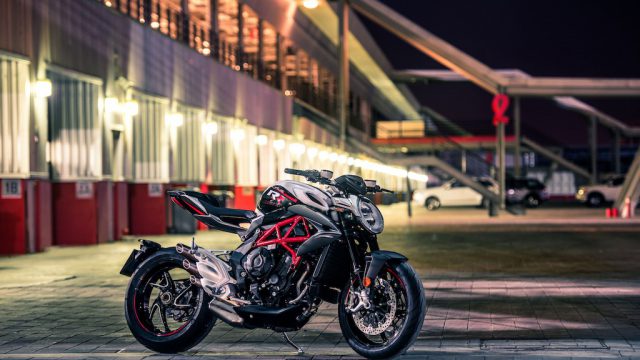
No doubt about it, the 2018 MV Agusta Brutale 800RR is an exuberantly thrilling real world motorcycle which looks great, and goes like it looks. Its increased refinement and excellent performance while meeting Euro 4 requirements augur well for the similarly uprated such models coming from the Italian manufacturer, now that it’s seemingly re-invented itself successfully, and is finally back for good in the marketplace.
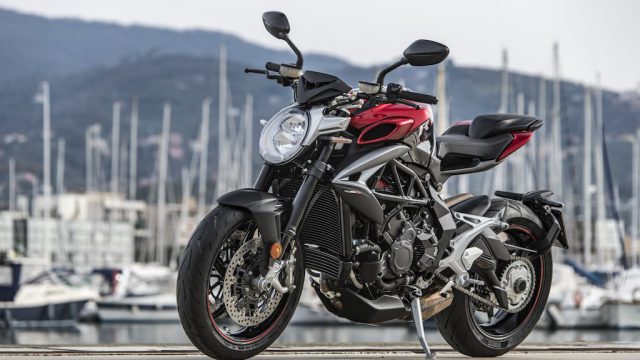
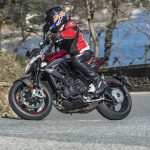
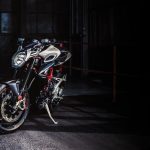
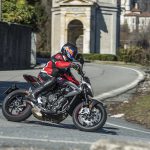
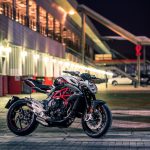
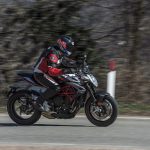
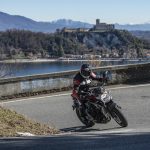
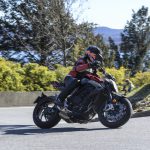
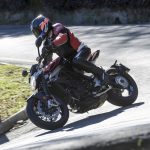
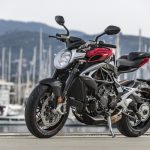
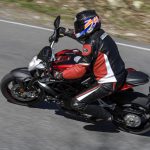
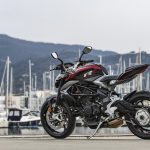
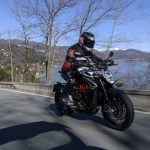
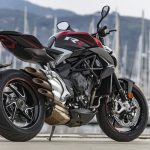
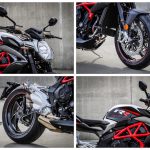
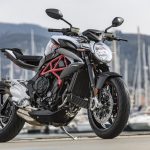
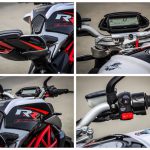
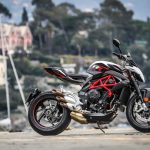
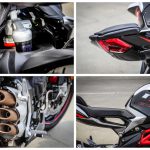
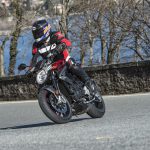
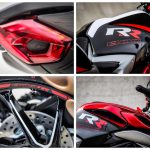
There’s something about MV that always set them apart from other bike manufacturers. Hope to buy one soon. keep up the great content guys.